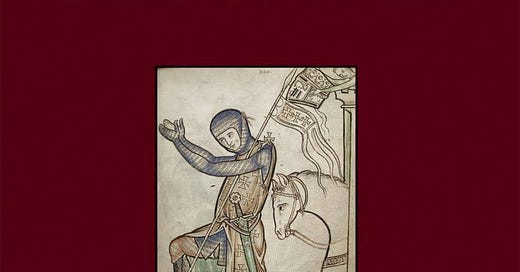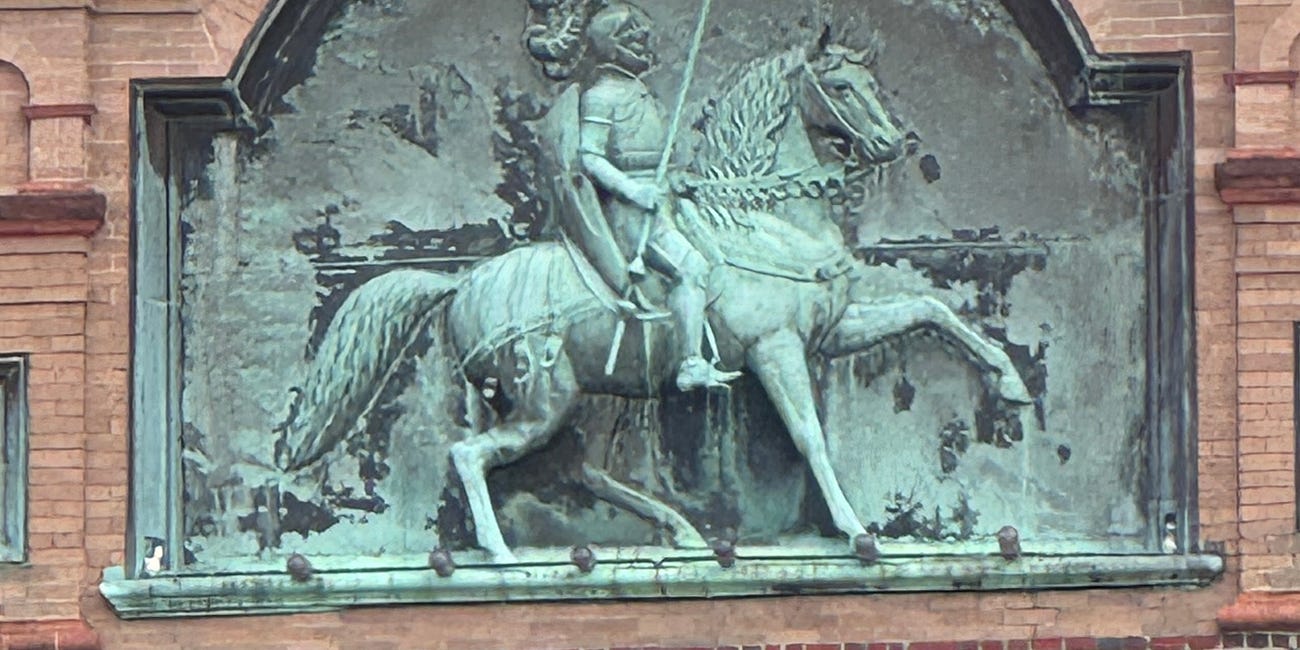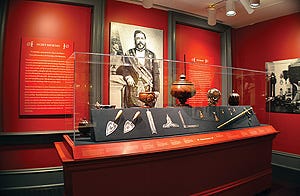He who serves the Virgin well / will go to Paradise.
—Alfonso X, Cantigas de Santa Maria, Cantiga 103
We interrupt our Troubadour series to bring you an anecdote.
So, I’m happily reading Seven Myths of the Crusades, a compilation of articles about, well, myths about the Crusades, and it’s very good, and pretty short. If you are interested in such things, it is a good read.
What are the myths, you ask? Well, let’s see: the view that the Crusaders were violent barbarians vs. the peaceful, cultured Muslims who were just minding their own business—a depiction you find in the movie Kingdom of Heaven, for example—is not historically justified. There was plenty of colonialism, religious intolerance, and violence to go around on both sides…Or the myth that the Knights Templar were a mystic secret society at the heart of a vast conspiracy…
This quote from the book is pretty funny (it includes a quote from Foucault’s Pendulum by Umberto Eco):
The lunatic is easily recognized. He is a moron who doesn't know the ropes. The moron proves his thesis; he has a logic, however, twisted it may be. The lunatic, on the other hand, doesn't concern himself at all with logic; he works by short circuits. For him, everything proves everything else. The lunatic is all idée fixe, and whatever he comes across confirms his lunacy. You can tell him by the liberties that he takes with common sense, by flashes of inspiration, and by the fact that sooner or later he brings up the Templars.
“. . . There are lunatics who don't bring up the Templars, but those who do are the most insidious. At first they seem normal, then all of the sudden...”
The words of Umberto Eco's fictional character Belbo, one of the three neurotic editors at Garamond Press in Milan, which specializes in hermetic and occult works, are emblematic of the widespread fantasies concerning Templar conspiracies.
—Jace Stuckey, Templars and Masons, An Origin Myth, in Seven Myths of the Crusades
But I am not here to go deep on Templar conspiracies, I am here to connect the Templars to paradise.
I live in Hawaiʻi, which many people find a kind of paradise on earth. Imagine my surprise, when I turn the pages of Seven Myths of the Crusades, and stumble upon this:
I have read a reasonable amount of Hawaiian history, including a good deal about Kalakaua, but somehow it has escaped my notice he was a Mason, a 32nd degree Mason in fact, and that he had a “Templar sword.” Kalakaua was Hawaiʻi’s last king. He became king in 1874. He traveled widely, basically around the entire world. In 1887, Kalakaua signed the “Bayonet Constitution” under duress from a cabal of American businessmen. This put the kingdom on a path toward an eventual coup. In 1890, Kalakaua sailed for California, for reasons which were not made entirely clear, but perhaps to seek aid. His sister Liliʻuokalani became his regent. Shortly thereafter, Kalakaua became ill and died in California, and Liliʻuokalani became queen. She reigned for about two years, and fought to preserve Hawaiʻi as an independent kingdom. In January of 1893, Hawaiʻi was overthrown by American businessmen, who hoped for it to be annexed by the United States, which did come to pass.
The Masons and the Templars
OK, but why are modern Masons associated with the medieval Knights Templar? You may recall in a previous episode, I traced another fraternal, charitable organization, the modern-day Knights of Malta back to the medieval Knights Hospitaller…
There is a big time gap between the Masons and the Templars, so the connection is mysterious. The Templars began in Jerusalem around 1118; the end of the Templars began on Friday, October 13, 1307, with their mass arrest by Philip the Fair (many people attribute the unluckiness of Friday the 13th, perhaps incorrectly, to this event). Before long we are into Dan Brown territory, The Da Vinci Code, and the Rosslyn Chapel, and more conspiracies…
The Masons, aka the Freemasons, originated around 1717 in London, as a form of stonemason guild. Some versions of the story have the Masons originating earlier, in Scotland, perhaps by Templars that escaped Philip’s pogrom…OK, let’s come back from the conspiracies…
As it happens, Kalakaua’s Templar Sword was passed down through the family, and eventually auctioned off by Southby’s in 2003, which listed the provenance.1 Unbelievably, to me at least, the sword sold for a paltry $13,000.2 The Masons organization in Hawaiʻi financed the purchase, and from what I can tell, the sword is now on display at ʻIolani Palace. A field trip may be in order…
So why are the Templars associated with the Masons, and why do Masons have Templar Swords? Good question. I didn’t know either. Consulting that undoubtedly 100% accurate source, ahem, Wikipedia, we learn that the first association of the Templars and the Masons was around 1737, by a Mason, Andrew Michael Ramsey.3 Who did not cite any history, it was simply an assertion, one that has become part of Mason lore. And why do the Masons have a Templar Sword? Good question. I’m not a mason, and answers on the internet are vague, but it seems like…the early Masons had a lot of paraphernalia and symbolic trappings and they thought a medieval sword would be cool.4
Who knew there would be a connection from the history of Hawaii all the way back to the Crusades?
https://www.sothebys.com/en/auctions/ecatalogue/2003/african-oceanic-art-n07942/lot.134.html
https://the.honoluluadvertiser.com/article/2003/Nov/15/ln/ln03a.html
https://en.wikipedia.org/wiki/Knights_Templar_(Freemasonry)
http://www.midnightfreemasons.org/2019/11/the-sad-truth-of-masonic-sword.html








